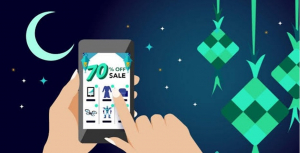After waiting 17 years for the retail tech industry to create a real-time data solution, a former P&G market-research director took matters into her own hands.
A decade ago, marketers charged with segmentation, targeting and positioning for consumer packaged goods (CPG) relied on traditional market research as a means of understanding consumption habits, brand lift, and brand equity. Research firms operated in an ecosystem wherein they had no access to actual purchase behaviour and relied on limited sampling of lookalike audiences.
“I was market research director at P&G for 17 years and the kind of data that we had on shoppers was very flimsy—it was collected house to house via survey, asking what did you buy last week,” said Teresa Condicion, co-founder and chief data officer of Snapcart, an app that offers cash incentives to consumers that upload shopping receipts.
Retailers, of course, are reluctant to share point-of-sale data, meaning marketers had to wait one to three months to access data that offers a glimpse into the purchase and post-purchase behaviour.
“I never used to be able to action it because how can I action something that is three months old,” said Condicion.
Even with the rise of ecommerce, most CPG marketers rely on third-party sites or white-label turnkey solutions, removing themselves from the data-ownership equation. Condicion decided to turn the tables with Snapcart.
With nearly half a million downloads since launching in mid-2016, this system has allowed Snapcart to partner with 25 CPG brands around the world, all of which can access real-time offline consumer spending and shopping habits reports. Nestle, Unilever, P&G, and L’Oreal are among Snapcart’s CPG clients.
“We have about eight machine-learning models and we provide analytics pertaining to the effectiveness of a promotion,” said Condicion, adding that the system can tell clients which competitors are running promotions, on what basis, and the likelihood of a switch.
The system is especially helpful in identifying complimentary purchases, such as consumption staples that shoppers associate with over-the-counter medicines. In understanding this, CPG marketers have an understanding of the industry profit pool, including areas to cross-sell, which is vital information for distributors as well.
Quantifying the success of Snapcart, the business raised a combined $10 million from Vickers Venture Partners, Social Capital, Kickstart Ventures, and Endeavor Catalysts, Wavemaker Partners, and SPH Ventures in Series A funding.
According to Condicion, the funds are being used for continuous development of technology, such as an ad tracker solution that helps brands measure purchase impact from media spending, which is followed by tracking real-time insights and understanding a shopper’s response.
The funding will also contribute toward expansion in other countries and verticals and in talent acquisition, with the latter divided between technology, sales, and data-science teams. Expanding the customer base, Condicion added that Snapcart would now start working with companies in the consumer-electronics space. Source: Campaign Asia-Pacific
________________________________________________________________________________
Originally written by Babar Khan Javed published in Campaign Asia on 6 July 2018.





